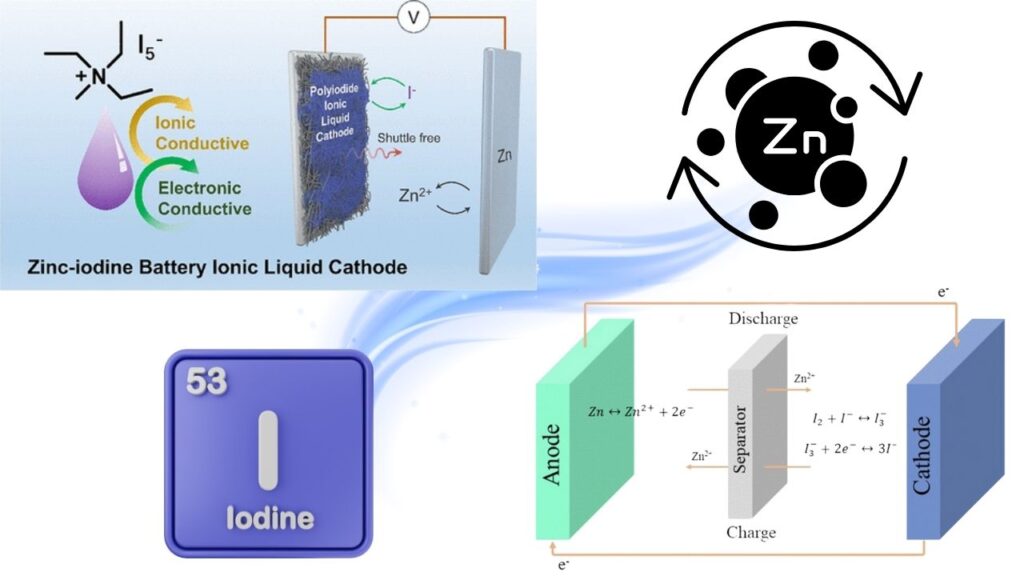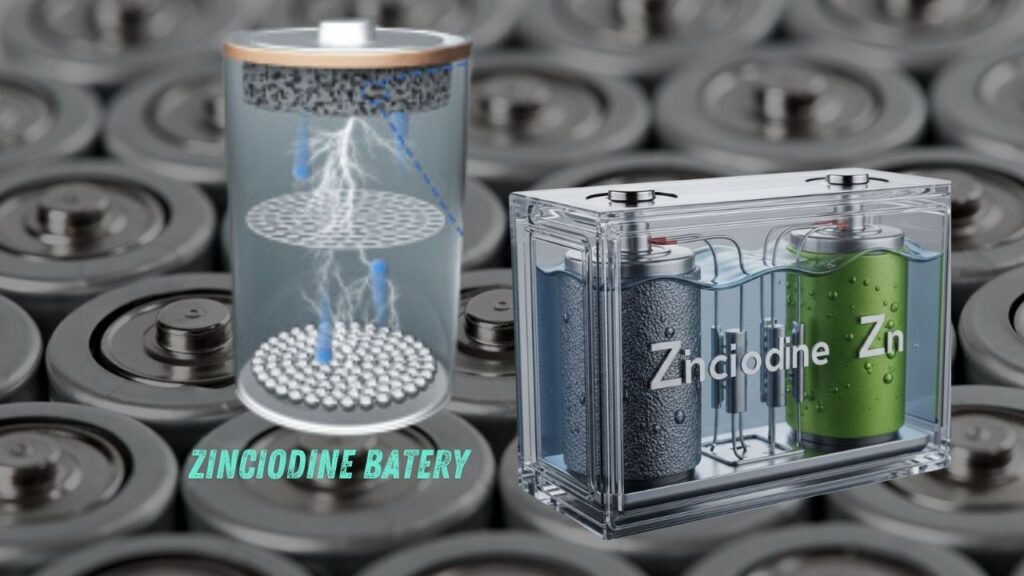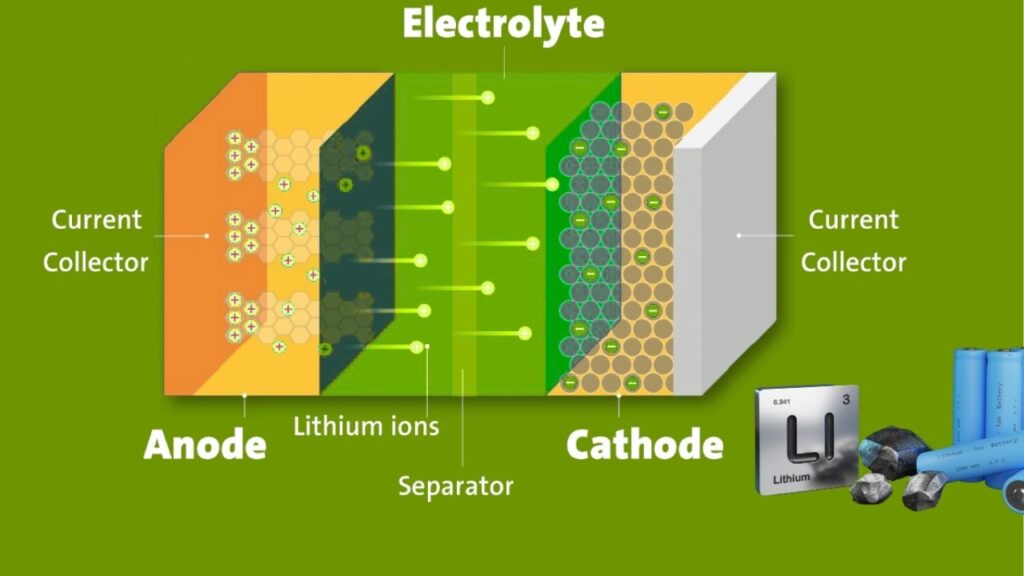Zinciodine Battery: In the ever-evolving world of clean energy and advanced electronics, the zinciodine battery is gaining serious momentum as a new alternative to lithium-ion technology. As the global demand for safer, cheaper, and more sustainable power storage grows, scientists and engineers are working overtime to push battery innovation beyond the limits of lithium.

Zinciodine battery technology, based on zinc and iodine chemistry, is emerging as a game-changing option—offering high energy density, enhanced safety, and greater affordability. While it’s still in the early stages, recent breakthroughs suggest zinciodine batteries could be the future of energy storage, especially for electric vehicles, grid systems, and even personal devices.
Zinciodine Battery
| Feature | Details |
|---|---|
| Battery Type | Zinciodine (Zinc-Iodine) Rechargeable Battery |
| Primary Advantage | Safer, cheaper, more sustainable than lithium-ion |
| Energy Density | ~471.8 Wh/kg (benchmark from zinc-sulfur prototypes) |
| Cycle Life | 500+ cycles with 85% retention (as per lab data) |
| Use Cases | Grid storage, e-mobility, portable electronics |
| Cost Advantage | Zinc is ~75% cheaper than lithium (USGS 2024) |
| Safety Rating | Uses non-flammable aqueous electrolytes |
| Latest Breakthrough | Case Western Reserve University, 2025 |
| Official Resource | Case Western Energy Institute |
The zinciodine battery represents a major step forward in energy storage. With abundant materials, water-based safety, and strong research support, it stands as a viable alternative to lithium-ion in many applications. As governments and industries push toward a greener future, this innovative tech might just become a mainstream solution in energy grids, electric scooters, and household devices.
Whether you’re a policy maker, engineer, startup founder, or just battery-curious—zinciodine deserves a spot on your radar.
What Is a Zinciodine Battery?
A zinciodine battery is a rechargeable battery system that uses zinc as the anode and iodine as the cathode, immersed in a water-based electrolyte. This chemistry is part of the broader category of zinc-based batteries, known for their abundant materials, cost-effectiveness, and safe operation.

While lithium-ion batteries have been the gold standard for the last two decades, they suffer from high cost, safety concerns, and resource limitations (like dependence on cobalt and lithium). Zinciodine batteries aim to solve those issues using readily available, recyclable elements.
In simple terms, zinciodine batteries store energy using safe and cheap ingredients—zinc and iodine—instead of expensive and flammable materials like lithium and cobalt.
How Does a Zinciodine Battery Work?
Let’s break this down in simple steps:
- Zinc gives away electrons, which travel through a wire to power your device.
- Iodine receives the electrons on the other end.
- A water-based solution helps move ions back and forth to complete the cycle.
- When the battery charges, this flow reverses, storing energy for later use.
The electrolyte in the latest prototypes is enhanced with propylene glycol methyl ether (PGME), which helps improve stability and lifespan.
Why Is It Better Than Lithium-Ion?

Safer to Use
Traditional lithium-ion batteries use flammable organic electrolytes, which can catch fire or explode under stress. Zinciodine batteries use water-based electrolytes, which drastically reduces fire risk.
According to Dr. Liming Dai from Case Western, “Aqueous zinc batteries completely eliminate the danger of thermal runaway.”
Much Cheaper to Produce
- Zinc costs around $2/kg, while lithium exceeds $8/kg, according to the U.S. Geological Survey (USGS).
- Iodine is abundant and doesn’t require conflict-zone mining or rare-earth extraction.
This makes zinciodine batteries highly promising for low-cost, large-scale deployment.
Environmentally Friendly
Zinciodine batteries avoid:
- Toxic solvents
- Scarce minerals
- High-temperature processing
This makes them recyclable, non-toxic, and planet-friendly.
Where Can Zinciodine Batteries Be Used?
Grid Energy Storage
Energy from solar or wind farms can be stored safely and cheaply using zinciodine batteries. Their low flammability and affordable components make them ideal for stationary storage.
Electric Scooters and E-Bikes
In countries like India and Vietnam, low-cost electric vehicles are taking off. Zinciodine batteries offer a safe, cost-effective power solution for two- and three-wheeled transport.
Portable and Wearable Devices
Because of their non-toxic and stable chemistry, zinciodine batteries are ideal for smartwatches, IoT sensors, school tablets, and children’s electronics—where safety matters most.
Research Highlights and Innovations
In 2025, researchers at Case Western Reserve University achieved major progress with zinciodine batteries:
- Achieved 1456 mAh/g capacity, one of the highest in zinc-based systems
- Maintained 85% capacity after 500 cycles
- Used PGME additives to reduce internal gas formation and improve durability
The findings were published in Advanced Energy Materials Journal and indicate zinciodine batteries are becoming commercially viable alternatives to lithium-ion for many sectors.
Step-by-Step Guide: How Zinciodine Batteries Are Built
Step 1: Anode Preparation
Zinc sheets or particles are shaped into electrodes using basic metal processing.
Step 2: Cathode Coating
Iodine is bonded to a conductive substrate or carbon layer to enable electron flow.
Step 3: Electrolyte Mixing
Aqueous electrolytes are mixed with salts and performance-enhancing solvents like PGME.
Step 4: Cell Assembly
Battery components are assembled in layers (pouch cells or cylindrical designs).
Step 5: Testing and Cycling
Cells undergo rigorous testing through hundreds of charge-discharge cycles to validate performance.
Real-World Case Studies
Eos Energy Enterprises
This U.S.-based company is deploying zinc-based batteries (zinc-bromine) for grid storage. Their model is paving the way for wider zinciodine adoption.
IIT Madras, India
The IIT-M Energy Initiative is actively exploring zinciodine and zinc-air battery prototypes for electric two-wheelers and rural energy storage under the $100/kWh threshold.
Career and Business Opportunities
This emerging tech opens doors for professionals and entrepreneurs in several fields:
- Battery Engineers specializing in materials or electrochemistry
- Clean Tech Startups focusing on renewable energy storage
- Manufacturers of electric vehicles or portable electronics
- Policy Makers and Investors looking to fund or incentivize sustainable energy
Companies like ZincFive, Urban Electric, and VoltStorage are already exploring zinc battery roles—hinting at major industry shifts ahead.
AI Predicts Stronger Metal‑Doped Materials With Improved Mechanical Properties
Precisely Placed Platinum Atoms Boost Catalyst Efficiency and Speed
Ultrasound Technique Accurately Detects Defects in Aluminum Manufacturing
FAQs About Zinciodine Battery
Is the zinciodine battery available on the market?
Not yet. It’s in the prototype and pilot testing stages, with commercialization likely in 2–5 years.
Can zinciodine batteries power smartphones?
Not currently. Energy density is still below that of lithium-ion for compact devices, but improvements are in progress.
Is it safe for home use?
Yes. The non-flammable electrolyte makes it far safer than lithium-ion for solar backup or UPS systems.
Will it replace lithium-ion batteries?
Not entirely. Zinciodine will complement lithium-ion, especially in areas where cost and safety are bigger priorities.






